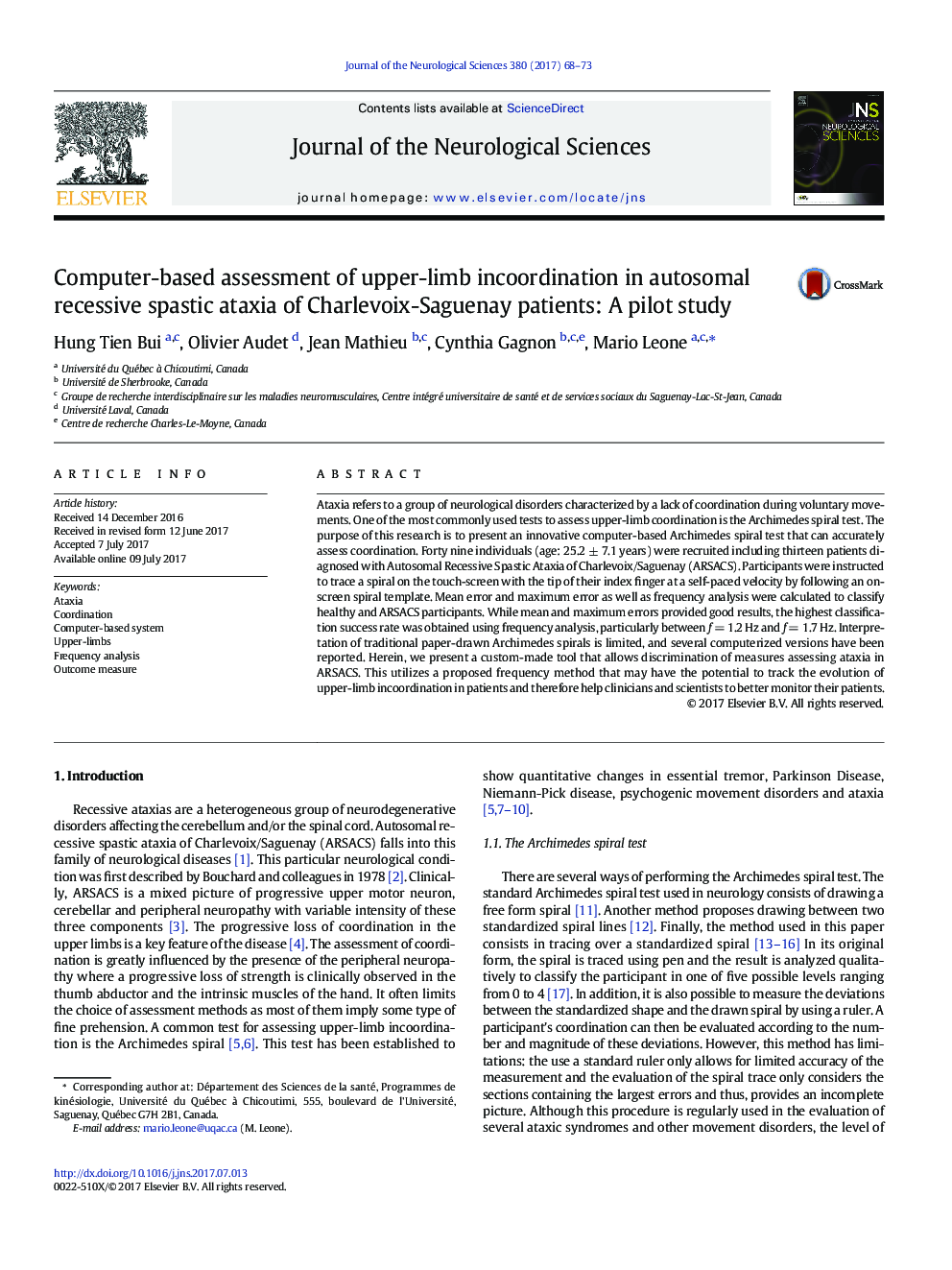| Article ID | Journal | Published Year | Pages | File Type |
|---|---|---|---|---|
| 5502581 | Journal of the Neurological Sciences | 2017 | 6 Pages |
Abstract
Ataxia refers to a group of neurological disorders characterized by a lack of coordination during voluntary movements. One of the most commonly used tests to assess upper-limb coordination is the Archimedes spiral test. The purpose of this research is to present an innovative computer-based Archimedes spiral test that can accurately assess coordination. Forty nine individuals (age: 25.2 ± 7.1 years) were recruited including thirteen patients diagnosed with Autosomal Recessive Spastic Ataxia of Charlevoix/Saguenay (ARSACS). Participants were instructed to trace a spiral on the touch-screen with the tip of their index finger at a self-paced velocity by following an on-screen spiral template. Mean error and maximum error as well as frequency analysis were calculated to classify healthy and ARSACS participants. While mean and maximum errors provided good results, the highest classification success rate was obtained using frequency analysis, particularly between f = 1.2 Hz and f = 1.7 Hz. Interpretation of traditional paper-drawn Archimedes spirals is limited, and several computerized versions have been reported. Herein, we present a custom-made tool that allows discrimination of measures assessing ataxia in ARSACS. This utilizes a proposed frequency method that may have the potential to track the evolution of upper-limb incoordination in patients and therefore help clinicians and scientists to better monitor their patients.
Related Topics
Life Sciences
Biochemistry, Genetics and Molecular Biology
Ageing
Authors
Hung Tien Bui, Olivier Audet, Jean Mathieu, Cynthia Gagnon, Mario Leone,
